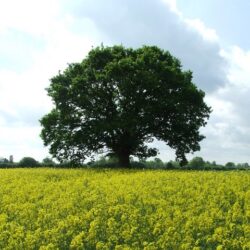| Source (Yiddish) | Translation (English) |
|---|---|
|
דיא תְּחִנָה זאָגט מען װען מען בּײַסט אָפ דעם פִּטוּם פוּן דעם אֶתְרוֹג:
|
This teḥinah is recited when biting off the pitum:
|
|
רִבּוֹנוֹ שֶׁל עוֹלָם דֶר האר פוּן דֶר װעלט
|
Master of the Universe, the Lord of the world —
|
|
װײַל חַוָה הָט גיגעסין פוּן דעם עפּיל זאָלין מיר אלע װײבּר לײַדין אזוֹ איין שטראָף צוּ שטארבּין אוּנ װען איך װאָלט דענסטמאָל גיװען װאָלט איך בּודאי ניט גיװאָלט האָבּין קײן הֲנָאָה פוּן דעם עפּיל
|
Because Ḥavah ate from the apple, all us women suffer from the punishment of death. If I were there, I would certainly not have wanted to derive any pleasure from the apple.
|
|
אזוֹ װאױל אז אצוּנד האָבּ איך פוּן דעם אֶתְרוֹג ניט קיין הֲנָאָה גיהאט גאנצע זיבּין טעג מַהֲמַת ער איז גגעבּין גװאָרין צוּ אֵיין מִצְוָה
|
[I am] so virtuous that I did not derive any pleasure from the etrog for seven entire days, because it was designated to be used [exclusively] for a mitsvah.
|
|
אוּנ אֲפִילוּ הײַנט אין הוֹשַׁעֲנָא רַבָּה איז שױן די מִצְוָה אױשׂ פוּן דעסט װעגין האָבּ איך נאָך ניט קיין חֵשֶׁק הֲנָאָה צוּ האָבּן פוּן אים אוּנ אזוֹא װײניג הֲנָאָה װאָס איך האָבּ פוּן דעם פִּטוּם אזוֹ װֶײניג הֲנָאָה װאָלט איךְ גיהאט פוּן דעם עפּיל װאָס דוּא האָסט פאר בּאָטין הֲנָאָה צוּא האָבִּין׃
|
Even though today, on Hoshana Rabbah, the mitsvah is over, nevertheless I still do not have any desire to derive any pleasure from it. And just like I have so little pleasure from this pitum, so too I would have had little pleasure from the apple that You forbade to derive pleasure from.
|
This tkhine appears before Hallel in the Siddur Ḳorban Minḥah. Variations in the Yiddish spelling can be found in earlier and later editions of this siddur. Many thanks to Noam Sienna for highlighting this (in a Facebook post). The source from which the transcription was made was the 1897 edition of the Ḳorban Minḥah, however, it is found in earlier editions before Hallel as well. (Find the 1861 edition.) English translation by the inimitable Baruch Jean Thaler. (Thank you!)
Source(s)

Notes
| 1 | This opinion is cited in Bereshit Rabbah 15.7 — רַבִּי אַבָּא דְּעַכּוֹ אָמַר אֶתְרוֹג הָיָה, הֲדָא הוּא דִּכְתִיב (בראשית ג:ו): וַתֵּרֶא הָאִשָּׁה כִּי טוֹב הָעֵץ וגו׳, אֲמַרְתְּ צֵא וּרְאֵה אֵיזֶהוּ אִילָן שֶׁעֵצוֹ נֶאֱכָל כְּפִרְיוֹ, וְאֵין אַתָּה מוֹצֵא אֶלָּא אֶתְרוֹג. Rabbi Abba of Acco said: It was the etrog, as it is written: And when the woman saw that the tree was good for food (Genesis 3:6). Consider: go forth and see, what tree is it whose wood can be eaten just like its fruit? and you find none but the etrog. (trans. Midrash Rabbah Genesis, Soncino, p.123). Also find Sukkah 35a, the idea that “the etrog tree is the only tree in which the fruit and the tree taste the same.” Ramban connects the “pri ets hadar” with the etrog via the Aramaic “rogeg“, meaning “to desire”, as in Onkelos’ translation of ‘nehmad le’mareh’ (דמרגג למיחזי, desirable to look upon, Gen. 2:9. Ramban also cites the Targum for Exodus 20:14, Deuteronomy 5:18, and Psalms 45:14). For more on the etrog as the fruit of the Ets haDaat, find Ari Z. Zivotofsky’s article, “What’s the Truth About… The Apple in the Garden of Eden?” (Jewish Action, Summer 2017). |
|---|---|
| 2 | I am not certain as to the earliest attestation of this custom. If you know, please contact us or leave a comment. This practice should not be confused with the segula for an easy childbirth effected through the eating of etrog jelly — a segula ascribed to Rabbi Rachamim Nissim Yitzchak Palagi (c. 1813-1907; Izmir, Turkey), son of the renowned Rabbi Chaim Palagi. –Aharon Varady (ed.) |




